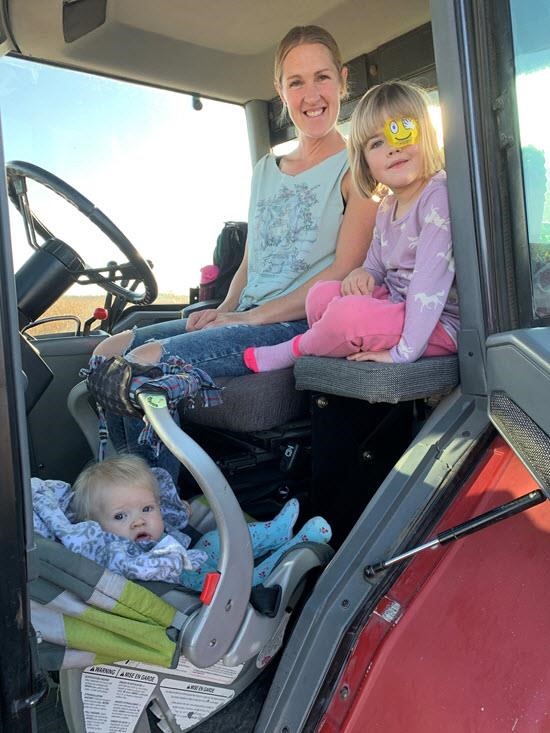Paige Dueck wanted a career working with animals and now she’s got one
By Diego Flammini
Staff Writer
Farms.com
If Paige Dueck, a dairy and grain farmer from Four Oak Farms in Kleefeld, Man., could go back in time to give her 12-year-old self some advice, the elder Dueck would tell the younger one to keep exploring.
“Try different jobs, work at different places and see what speaks to you,” Dueck told Farms.com. “That way, when you do choose a path, you know what you like. Mess around with this stuff when you’re young so you can succeed in your career sooner.”
This piece of advice comes from Dueck’s lived experience.
Dueck didn’t grow up on a farm but as a young girl her parents moved to rural Manitoba to nurture her love of horses and animals.
No matter how big or small, if a creature was around, Dueck wanted to see it.
“I always had a horse addiction. I could sniff them out at any fair, petting zoo or parade,” she said. “I loved finding little frogs in the backyard. And I spent lots of time in my youth working at chicken barns or pig barns or dairy barns. I’ve always been fascinated with living things.”
This interest in living creatures prompted Dueck to attend the University of Manitoba where she earned her Bachelor of Science in Agriculture, majoring in animal systems.
And it was at university where she met her now husband Marcus.
Paige knew about Marcus’s family farm before she knew him.
“I grew up about a mile away from him, but I had never met him,” she said. “I had asked to milk cows at his parents’ farm, but his dad said no because they didn’t need the help. I first saw Marcus when he and some other guys came to pick my brother up for his bachelor party. I saw him on my deck, and I said, ‘I like that guy.’ Him being a dairy farmer was a perk.”

Paige Dueck and her daughters, Sutton and Brielle.
Marcus and Paige are the third generation on the family farm where they milk around 50 Brown Swiss cows and grow corn, soybeans and other crops on around 785 acres of land.
Paige worked for Dairy Farmers of Manitoba as a producer relations coordinator. She’s also an Equine Canada certified riding instructor.
The message she hopes to pass along to her young daughters, Brielle and Sutton, and other women considering a career in ag, is that you can have it all.
“If you want to be a farmer, business owner, mom and wife all in one, you can do that,” she said. “You can’t take your kid to the office, but you can take your kid to the field or the barn. Women are absolute powerhouses in this industry.”
Dueck identified multiple women she considers powerhouses and inspirations in the industry.
One is her best friend’s mom, Hilda.
Dueck spent lots of time at Hilda’s house growing up as Dueck worked on their farm. And she remembers Hilda’s energy.
“She had these super rough hands, split skin and was in the barn a ton,” she said. “But then she’d come in the house and make meals and welcome everyone. I thought it was so cool.”
Another woman in ag Dueck admires is Dianna Fraser,
The two met through a horse show that Fraser runs. Her grace, kindness and hard work sticks out to Dueck.
“She just does so much stuff that you can’t think one person can accomplish,” Dueck said. “She’s super organic, she has time for everyone. She’s such a pleasure to be around.”
A third woman Dueck wanted to highlight is her vet, Allison Hueging.
Dueck leaned on her friend for advice about juggling farming and motherhood.
“She’s got three kids, a dairy farm and a vet business and I always just think to myself, ‘look at her go,’” she said. “Talking to her about being a mom and a busy farm woman is awesome.”
Farms.com is highlighting multiple women in ag as International Women’s Day draws closer.
The other women who have participated are:
- Jamie Tiralla, who traded in her career as a gemologist for one in agriculture in Calvert County, Md.,
- Sally Parsonage, a Westman, Man. farmer who considers her sister one of her biggest inspirations, and
- Jennifer Meyer, a cash crop and livestock producer from Wilton, N.D., who in 2020 became the first woman elected to the North Dakota Soybean Council.